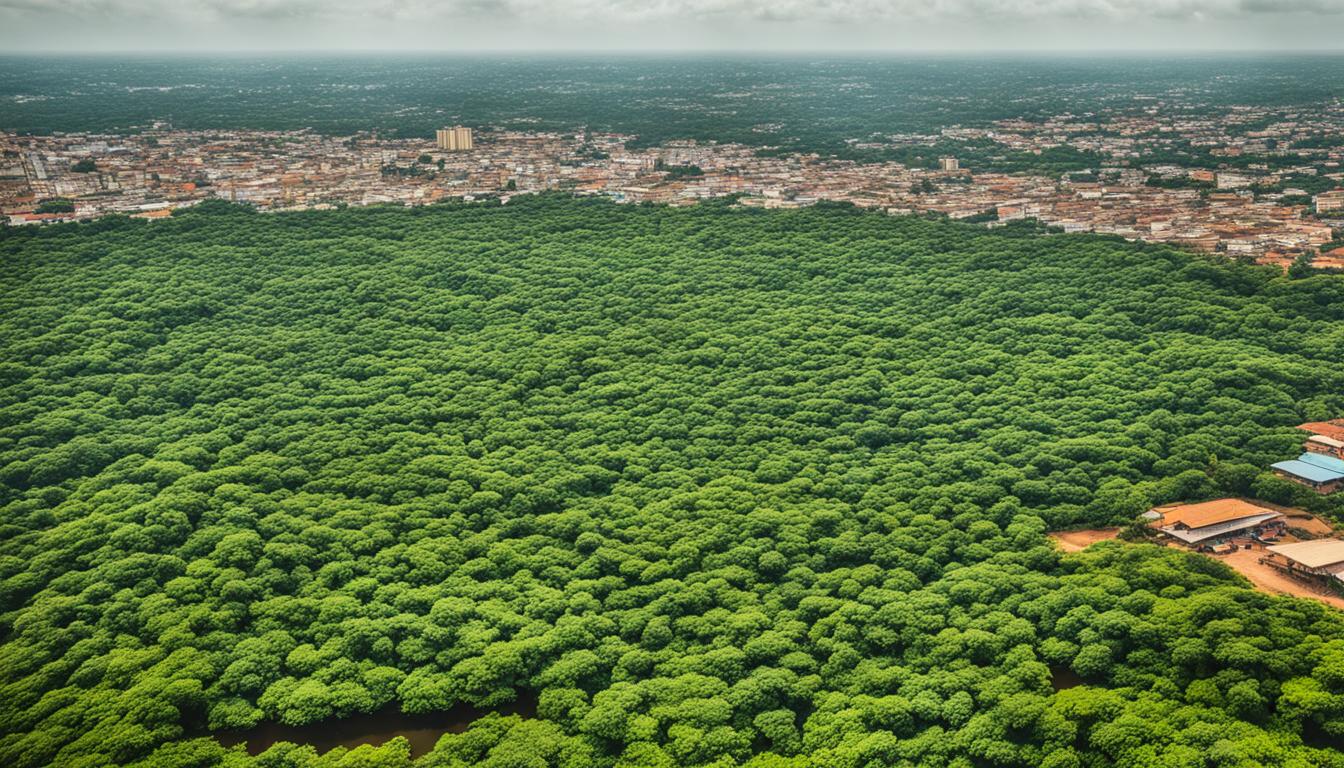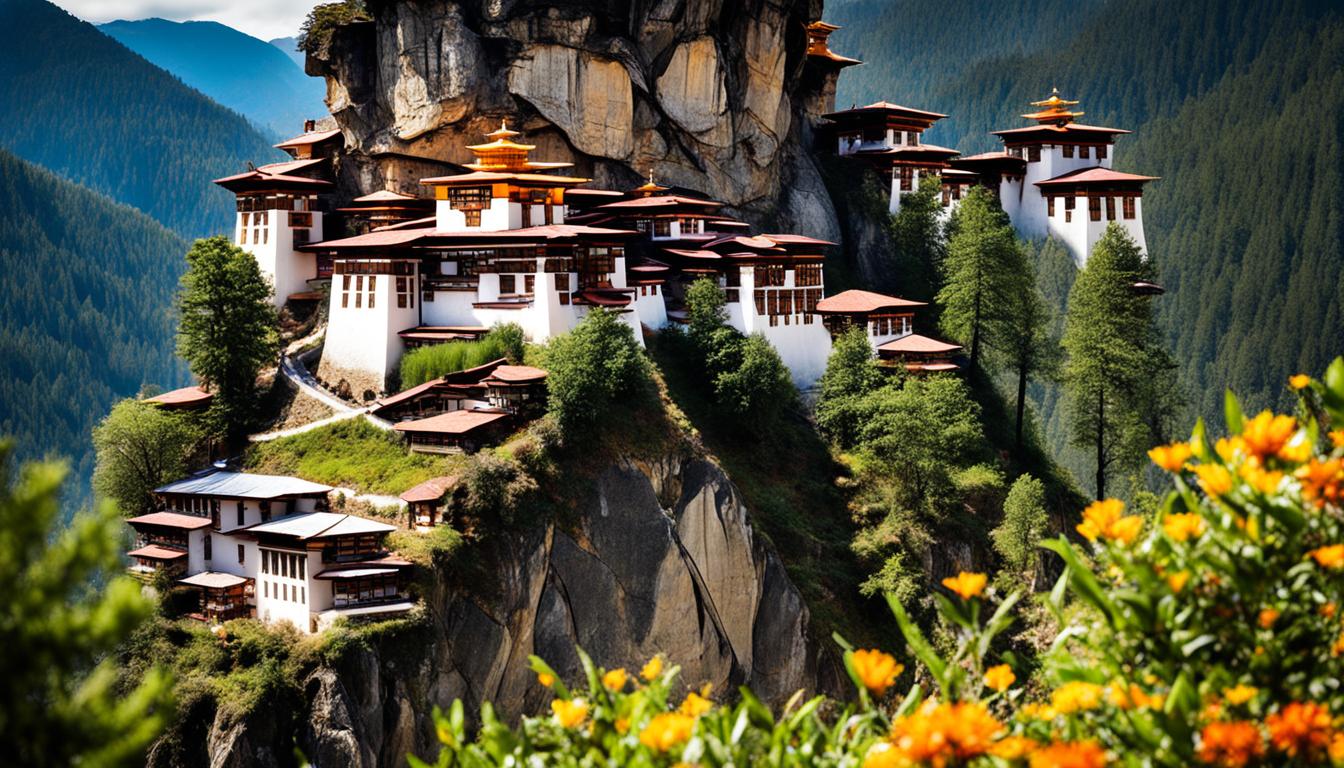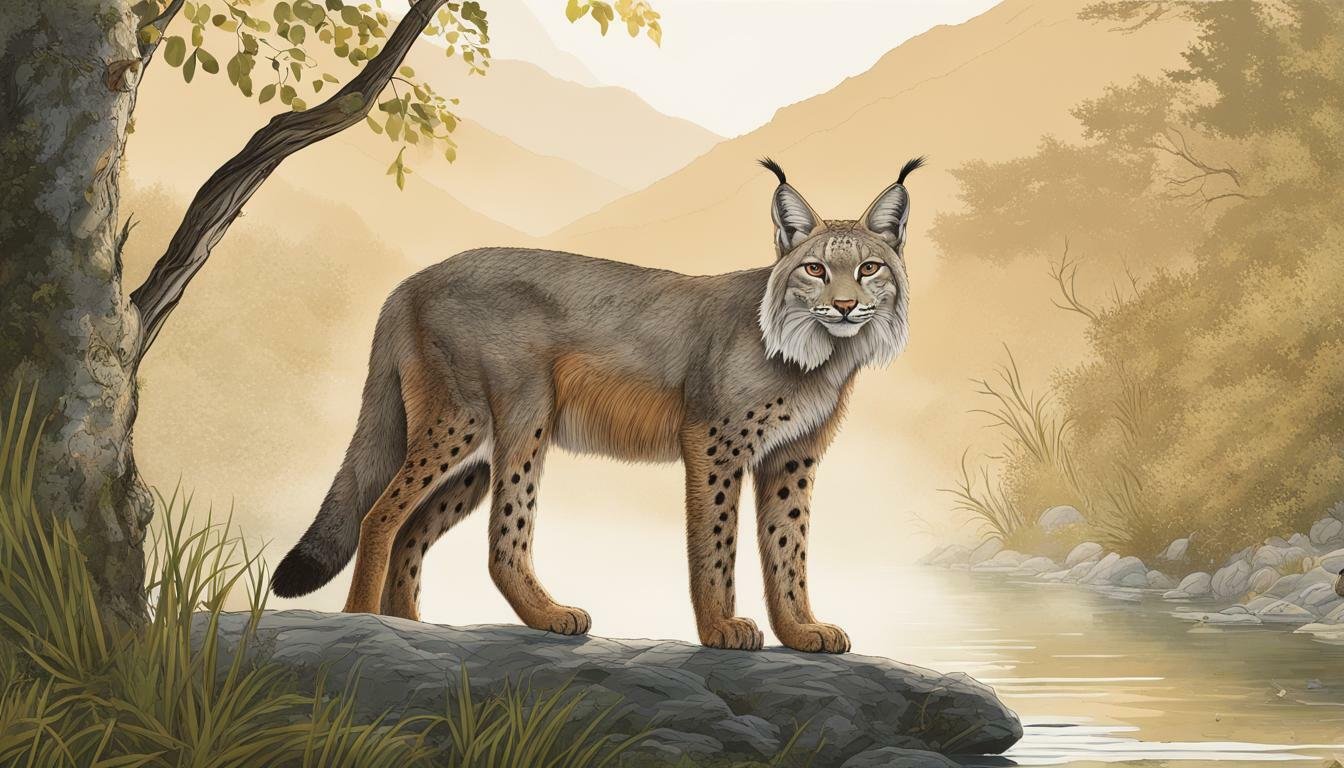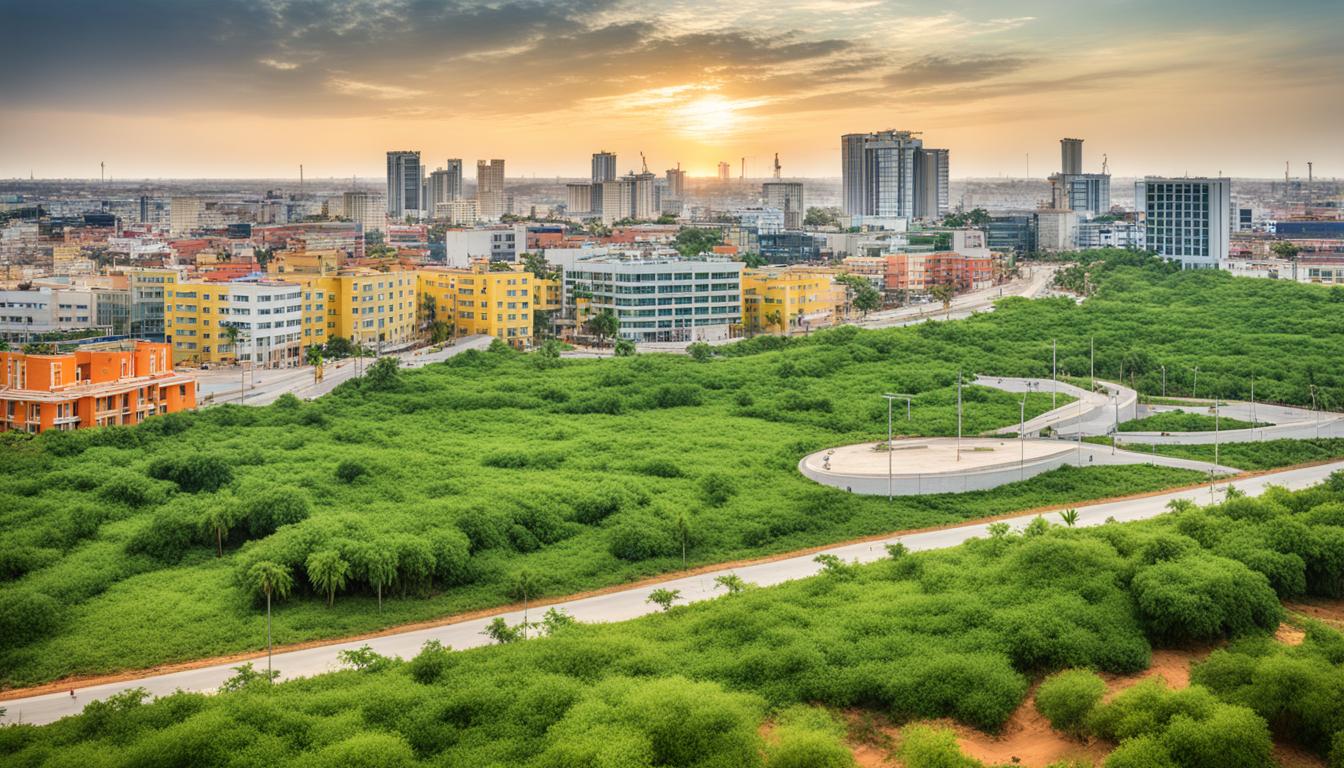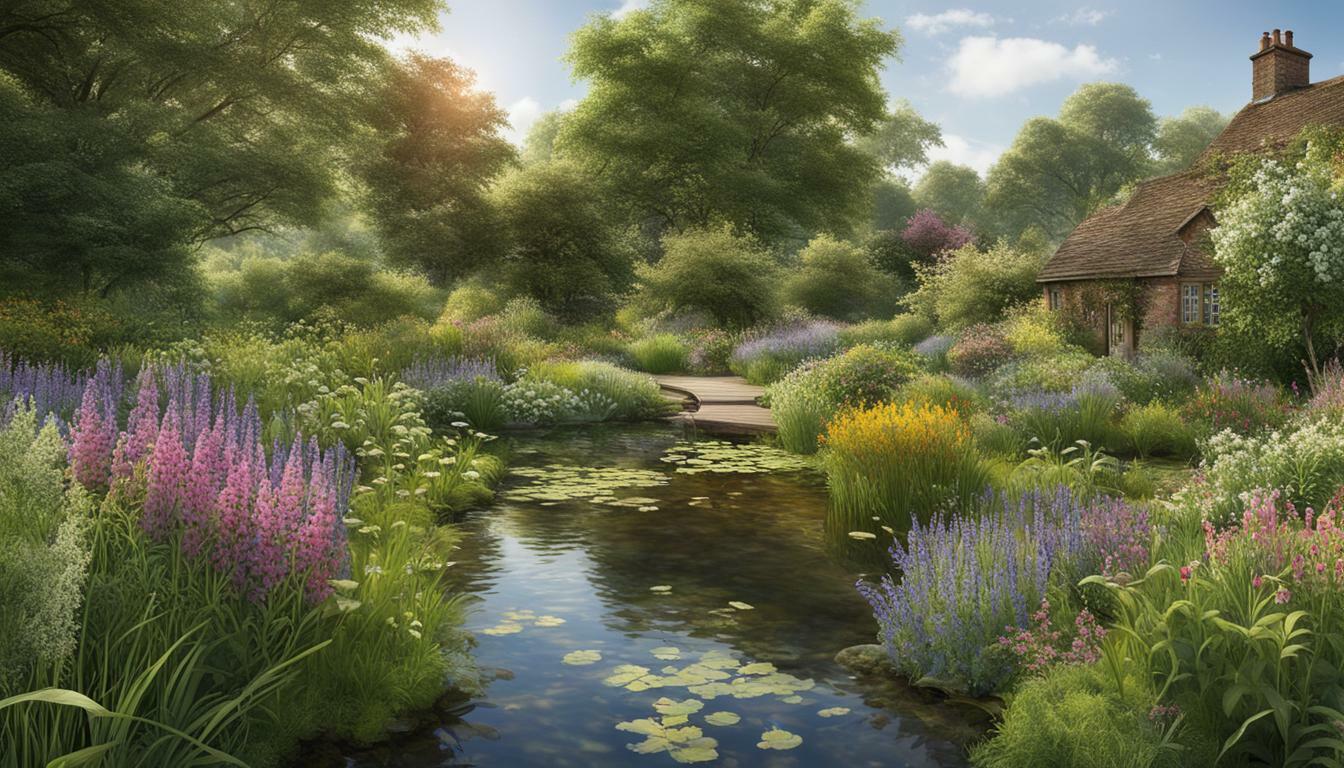Belize Biodiversity and the Built Environment
Belize is renowned for its stunning natural beauty and diverse ecosystems. The country boasts an impressive array of flora and fauna, making it a haven for biodiversity. With its commitment to environmental conservation and sustainable development, Belize is actively preserving its natural resources while embracing the architectural heritage that defines the built environment.
From its lush rainforests to its pristine coastal waters, Belize is home to over 150 species of mammals, 540 species of birds, 150 species of amphibians and reptiles, nearly 600 species of freshwater and marine fish, and 3,408 species of vascular plants. The country’s outstanding biodiversity is closely tied to its unique ecological development and sustainable architecture.
Key Takeaways:
- Belize is a biodiverse hotspot, with diverse ecosystems supporting a wide range of plant and animal species.
- The country’s architectural heritage integrates sustainable building practices, including traditional Mayan architecture and British colonial influence.
- Preserving Belize’s natural resources and promoting environmental conservation are key priorities for sustainable development in the country.
- Conservation efforts, such as the implementation of the National Biodiversity Strategy and Action Plan, are crucial in safeguarding Belize’s unique biodiversity.
- Green building practices and construction sustainability play a vital role in preserving Belize’s natural environment for future generations.
Importance of Conservation Efforts in Belize
Conservation efforts in Belize are of critical importance in preserving the country’s unique biodiversity. Through the establishment of protected areas and the preservation of wildlife, Belize aims to safeguard its natural resources for future generations.
Belize boasts an impressive 26% of its land and sea designated as protected areas, encompassing 95 reserves. These protected areas serve as invaluable habitats for a wide range of wildlife, offering opportunities for research, education, and sustainable tourism.
The National Biodiversity Strategy and Action Plan (NBSAP) plays a pivotal role in guiding conservation efforts in Belize. The NBSAP emphasizes the need for a comprehensive and integrated approach to the management of protected areas and the preservation of biodiversity.
To achieve the conservation goals outlined in the NBSAP, collaboration and support from various stakeholders are essential. By working hand in hand, Belize can ensure the long-term preservation of its diverse ecosystems and the numerous plant and animal species they sustain.
Biodiversity Hotspots in Belize
Belize is renowned for its remarkable biodiversity, boasting a multitude of ecosystems that support a wide variety of plant and animal species. Among these diverse landscapes, two notable biodiversity hotspots stand out: the Belize Barrier Reef and the Maya Mountains.
The Belize Barrier Reef
The Belize Barrier Reef is a true marvel and a hotspot for marine biodiversity. It is the largest unbroken coral reef complex in the Western Hemisphere, stretching over 300 kilometers along the coast of Belize. This extraordinary reef system includes a diverse array of habitats, such as coral formations, seagrass beds, and mangrove forests. The rich biodiversity of the Belize Barrier Reef provides a home for numerous species, including vibrant corals, colorful fish, marine mammals, and endangered sea turtles.
The Maya Mountains
The Maya Mountains, located in southern Belize, are another significant hotspot of biodiversity in the country. This mountain range is characterized by lush tropical rainforests, winding rivers, and cascading waterfalls. It serves as a sanctuary for a remarkable variety of wildlife, including elusive jaguars, ocelots, howler monkeys, and countless bird species.
Preserving these biodiversity hotspots is of paramount importance for the long-term survival of Belize’s ecosystems and the species that depend on them. These unique habitats contribute to the overall richness and ecological balance of Belize’s natural heritage, making them invaluable treasures that must be protected and conserved.
Threats to Belize Biodiversity
Belize’s rich biodiversity faces numerous threats that jeopardize the delicate balance of its ecosystems. These threats encompass habitat loss, climate change, unsustainable development practices, overfishing, and pollution. The consequences of these threats are far-reaching, impacting both terrestrial and marine habitats.
Rapid expansion of agriculture, urbanization, and infrastructure development are major contributors to habitat loss in Belize. As natural landscapes are transformed into agricultural fields and urban areas, species face displacement and loss of their natural habitats.
Climate change is another significant threat to Belize’s biodiversity. Rising temperatures and increased frequency of extreme weather events adversely affect ecosystems, leading to habitat degradation and species endangerment. The Belize Barrier Reef, a World Heritage Site and one of the most diverse marine ecosystems on the planet, is particularly vulnerable to climate change impacts. Rising sea temperatures contribute to coral bleaching, causing significant damage to this fragile ecosystem.
In addition, unsustainable development practices in Belize pose a threat to biodiversity. The pursuit of short-term economic gains often prioritizes profit over environmental conservation, resulting in the destruction of fragile habitats and the displacement of species.
Overfishing is yet another pervasive threat to Belize’s biodiversity. Unsustainable fishing practices, including the use of destructive gear and the depletion of fish stocks, disrupt the delicate balance of marine ecosystems. This not only puts fish populations at risk but also has cascading effects on other marine species, disrupting the intricate web of life.
Pollution, whether from industrial activities, agricultural runoff, or improper waste management, also poses a significant threat to Belize’s biodiversity. Pollutants in the air, water, and soil can harm wildlife, contaminate habitats, and disrupt ecosystems. Consequently, the health and survival of numerous plant and animal species are compromised.
Addressing these threats requires a multi-faceted approach involving conservation projects, sustainable practices, and public awareness. By promoting sustainable development, implementing effective conservation measures, and advocating for responsible environmental stewardship, Belize can safeguard its unique biodiversity for future generations.
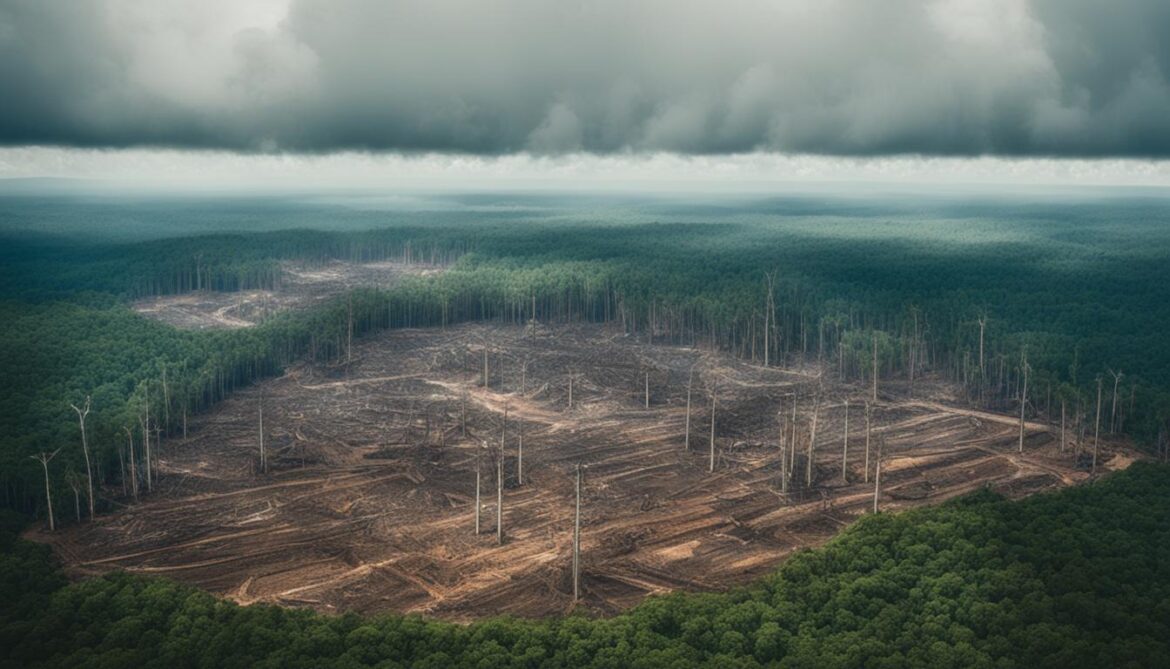
As the image illustrates, the threats to Belize’s biodiversity are complex and interconnected. Each threat exacerbates the others, and mitigating them requires a comprehensive and integrated approach. Conservation efforts, supported by governmental and non-governmental organizations, play a crucial role in protecting Belize’s natural heritage and ensuring the long-term viability of its ecosystems.
Belize’s National Biodiversity Strategy and Action Plan (NBSAP)
The National Biodiversity Strategy and Action Plan (NBSAP) in Belize serves as a comprehensive roadmap for biodiversity conservation and sustainable development. It recognizes the urgent need to protect and manage Belize’s natural resources, promoting the harmonious coexistence of humans and the environment.
The NBSAP highlights the importance of greater coordination among stakeholders, capacity-building efforts, and legislative reforms to effectively preserve and conserve Belize’s rich biodiversity. By implementing the NBSAP, Belize aims to strike a balance between economic development and environmental preservation, ensuring the long-term sustainability of its unique ecosystems.
Through cooperative efforts, the NBSAP has influenced the policies and actions of both the government and local and international NGOs in Belize. By fostering collaboration among diverse stakeholders, the plan aims to achieve the ambitious conservation goals outlined within it.
“The implementation of the NBSAP paves the way for transformative change, aligning our efforts towards a sustainable and resilient future for Belize’s natural heritage.” – [Name], Environmental Conservationist
Promoting Legislative Reforms
Legislative reforms play a crucial role in ensuring effective biodiversity conservation and sustainable development in Belize. The NBSAP calls for the enhancement of existing laws, the introduction of new regulations, and the establishment of greater enforcement mechanisms to protect Belize’s natural resources.
- Strengthening laws to combat illegal wildlife trade and promote habitat conservation.
- Regulating land use practices and promoting sustainable agriculture to minimize habitat loss and degradation.
- Implementing measures to mitigate the impact of climate change and promote climate resilience.
- Improving waste management systems to reduce pollution and protect aquatic ecosystems.
- Supporting sustainable tourism practices to balance economic growth with environmental preservation.
Collaboration for Conservation
The successful implementation of the NBSAP relies on collaboration and support from various stakeholders, including government entities, NGOs, local communities, and international partners. By working together, these stakeholders can pool resources, share knowledge and expertise, and drive meaningful change in biodiversity conservation in Belize.
“Protecting Belize’s biodiversity requires collaborative efforts that transcend borders, bridging organizations and communities for a shared vision of sustainable development.” – [Name], Environmental Advocate
In line with the NBSAP, Belize’s commitment to sustainable development is evident in its continuous efforts to protect its natural resources, conserve its unique ecosystems, and promote environmental stewardship. By prioritizing biodiversity conservation and sustainable development, Belize strives to preserve its natural heritage for future generations.
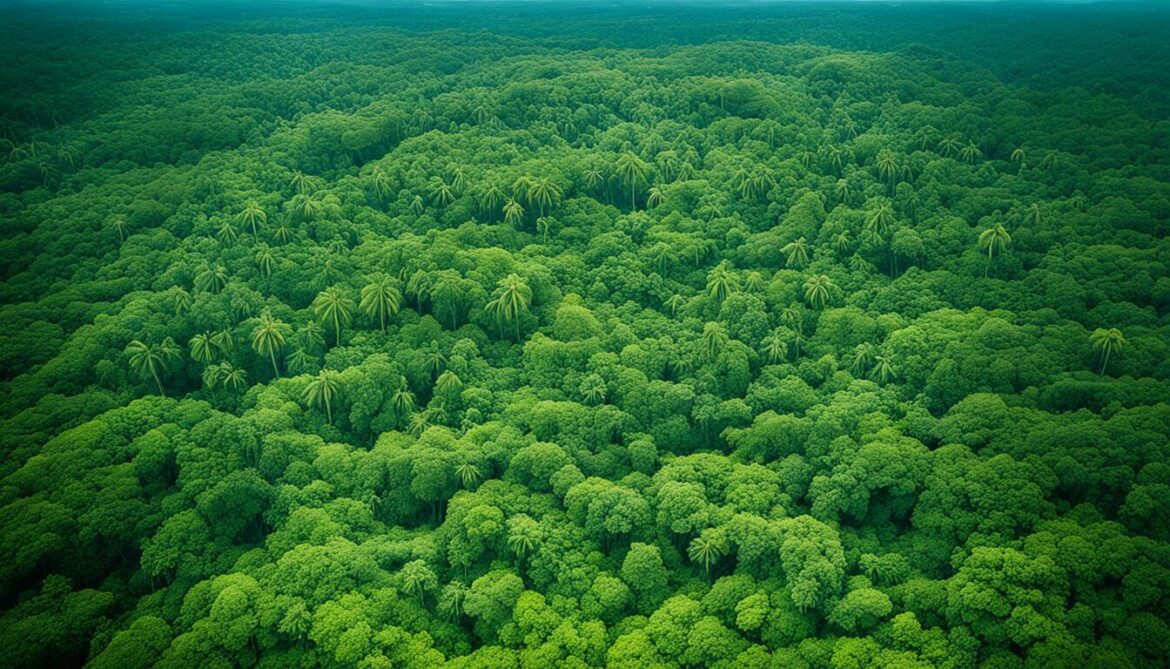
Modern Green Building Movement in Belize
Belize has a rich history of sustainable building practices, rooted in traditional Mayan architecture and influenced by British colonial practices. These historical green building practices have laid the foundation for the modern sustainable construction movement in Belize.
Mayan architecture, known for its harmony with nature, incorporated sustainable materials, such as limestone and thatch, which were readily available and locally sourced. The Mayans also incorporated natural elements, like ventilation systems and natural lighting, to minimize energy consumption. Their innovative engineering techniques, including the use of aqueducts and reservoirs, showcased their respect for the environment and efficient resource management.
The British colonial era further contributed to the sustainable building practices in Belize. Sustainable agricultural practices, such as agroforestry and terraced farming, were introduced to maximize land productivity while minimizing deforestation. Additionally, the construction of eco-friendly infrastructure, such as rainwater harvesting systems and plantation houses built on stilts to avoid soil erosion, reflected a commitment to environmental stewardship.
Today, the modern green building movement in Belize emphasizes energy efficiency, renewable energy, water conservation, and the use of local and sustainable materials. Architects and builders in Belize are implementing innovative technologies, like solar panels and rainwater collection systems, to reduce reliance on traditional energy sources and minimize water waste. Furthermore, they focus on utilizing materials that have a low environmental impact, such as bamboo, reclaimed wood, and recycled materials.
By embracing these green building practices, Belize is positioning itself as a leader in sustainable construction in the region. The preservation of historical green building practices, combined with the adoption of modern sustainable technologies, ensures that Belize continues to prioritize environmental conservation while meeting the needs of a rapidly developing nation.

A Quick Look: Green Building Practices in Belize
| Key Features | Benefits |
|---|---|
| Energy efficiency | – Reduces energy consumption and lowers utility costs. |
| Renewable energy | – Decreases reliance on fossil fuels and reduces greenhouse gas emissions. |
| Water conservation | – Minimizes water waste and preserves Belize’s freshwater resources. |
| Local and sustainable materials | – Supports local industries and reduces carbon footprint by minimizing transportation distances. |
The Belize Barrier Reef Reserve System
The Belize Barrier Reef Reserve System is an exceptional natural wonder that spans across seven sites, making it the largest reef complex in the Atlantic-Caribbean region. This magnificent ecosystem boasts the second largest reef system in the world, enveloping a remarkable array of marine life.
Recognized as a UNESCO World Heritage Site, the Belize Barrier Reef provides vital habitats to an astounding diversity of species, including several endangered and threatened ones. Its vibrant coral formations, seagrass beds, and mangrove forests support a delicate ecological balance that sustains a myriad of life forms.
However, the Belize Barrier Reef is not immune to the far-reaching effects of climate change. Rising sea levels, warming temperatures, and coral bleaching pose significant threats to this fragile ecosystem. These climate change impacts jeopardize the resilience and survival of countless marine species that depend on the reef’s health.
Furthermore, the management of the Belize Barrier Reef faces numerous challenges and threats. Overfishing and unsustainable harvesting of marine resources can harm the delicate balance of the ecosystem. Coastal development, tourism, and proposed oil and gas exploration introduce additional risks to the reef and its surrounding habitats.
“The Belize Barrier Reef Reserve System is a testament to the irreplaceable beauty and diversity of our oceans. It is our responsibility to protect and preserve this invaluable heritage for future generations.” – Marine Conservationist Jane Roberts
Efforts to safeguard the Belize Barrier Reef Reserve System require a comprehensive approach that involves effective management practices, sustainable tourism initiatives, and collaboration among stakeholders. By addressing these management challenges and mitigating threats, we can work towards a more sustainable future for this extraordinary natural wonder.
| Challenges | Threats |
|---|---|
| Overfishing | Coastal development |
| Unsustainable harvesting | Tourism |
| Proposed oil and gas exploration |
Preserving the Belize Barrier Reef’s extraordinary beauty and biodiversity is not solely the responsibility of a single entity but rather requires a collective commitment from individuals, communities, governments, and organizations alike. By working together, we can ensure the long-term survival and thriving future of this UNESCO World Heritage Site.
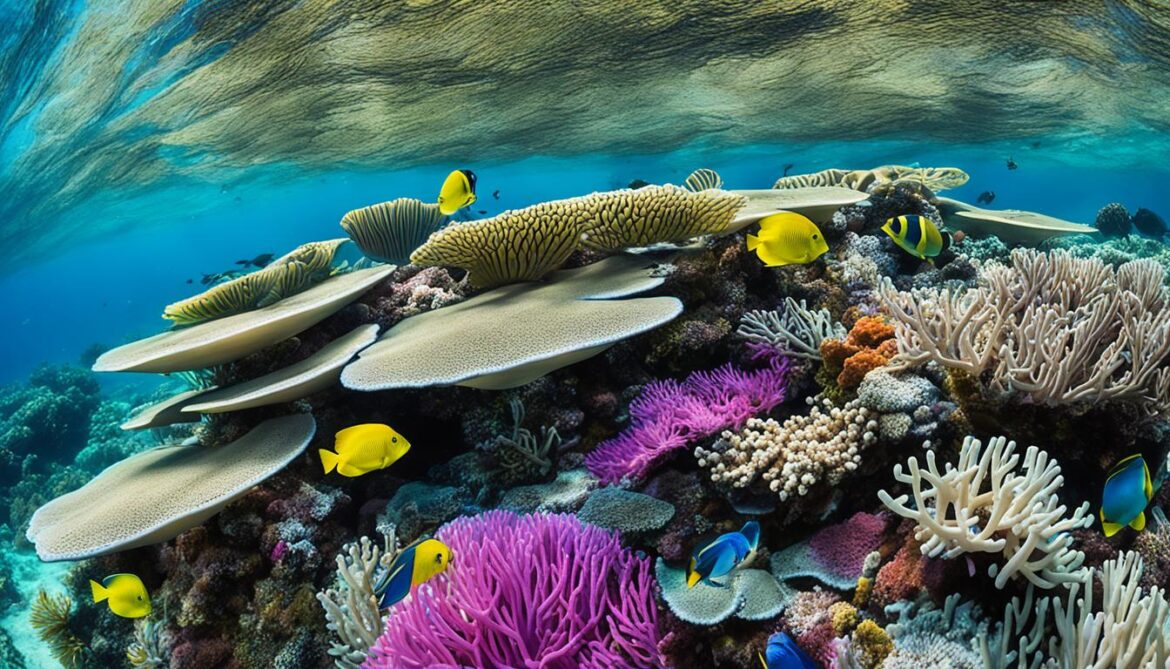
Climate Action Solutions and Strategies
The Resilient Reefs Initiative is working with key partners to ensure the resources needed for the resilience of the Belize Barrier Reef. Through collaborative efforts, this initiative aims to protect and restore the reef ecosystem, mitigating the impacts of climate change and preserving the biodiversity of Belize’s reefs.
Belize has established itself as a global leader in marine conservation with the execution of the Blue Bond and partnerships with organizations like the Resilient Reefs Initiative. These initiatives provide the financial support and expertise needed to implement sustainable practices and drive climate action in Belize.
As part of its sustainable development goals, Belize is integrating climate change mitigation and adaptation measures into its strategies. This includes investing in renewable energy, promoting energy efficiency, and implementing sustainable land management practices. These efforts are crucial for reducing greenhouse gas emissions and building resilience in the face of climate change.
Conserving marine resources is another key aspect of Belize’s climate action solutions. By implementing effective fisheries management strategies and protected area networks, Belize aims to protect and restore its marine ecosystems, ensuring the long-term sustainability of its valuable marine resources.
Furthermore, Belize is upgrading wastewater treatment systems to mitigate the pollution levels that pose a threat to the health of its reefs. Sustainable wastewater management plays a critical role in maintaining the water quality necessary for the growth and survival of coral reefs and marine life.
Financial incentives, such as tax breaks and subsidies, are essential tools for promoting sustainable building practices in Belize. These incentives encourage the adoption of environmentally friendly construction methods, such as using renewable materials, integrating energy-efficient designs, and implementing water conservation measures. By incentivizing sustainable building, Belize is aligning its construction industry with its commitment to sustainable development goals.
Financial Incentives for Sustainable Building in Belize
| Incentive | Description |
|---|---|
| Tax Breaks | Belize offers tax incentives to developers and homeowners who incorporate sustainable building practices, such as energy-efficient designs and renewable materials, into their construction projects. |
| Subsidies | The government provides financial support in the form of subsidies to encourage the use of sustainable technologies, such as solar panels and rainwater harvesting systems, in buildings. |
| Grants | Various grants are available to fund sustainable building projects, including those focused on retrofitting existing structures to improve energy efficiency and reduce environmental impact. |
Through these climate action solutions and strategies, Belize is positioning itself as a model for sustainable development and environmental stewardship. By prioritizing the resilience of Belize’s reefs and implementing financial incentives, Belize is taking concrete steps towards a greener future while safeguarding its unique ecological heritage.
Conclusion
Belize has made significant strides in promoting sustainable development and environmental stewardship. Through the concerted efforts of the government, partnerships, and the implementation of financial incentives, there has been a noticeable increase in sustainable housing developments and green infrastructure projects.
The future outlook for green building in Belize is promising, with ongoing initiatives aimed at promoting sustainable construction practices and addressing the threats to the country’s biodiversity. By prioritizing sustainability, Belize is striving to achieve a harmonious coexistence between humans and nature while preserving its unique architectural heritage and diverse ecosystems.
With a strong focus on Belizean sustainable development practices, the nation aspires to become a global leader in environmentally responsible construction. By embracing green building technologies and methodologies, Belize seeks to create a built environment that minimizes its carbon footprint and enhances its natural surroundings. Overall, Belize’s commitment to environmental stewardship and sustainable development paves the way for a brighter, more sustainable future.
FAQ
What is the importance of conservation efforts in Belize?
Conservation efforts in Belize are crucial for preserving the country’s unique biodiversity and protecting its natural resources. These efforts include the establishment of protected areas and the implementation of the National Biodiversity Strategy and Action Plan, which promote sustainable development and the preservation of ecosystems.
What are the biodiversity hotspots in Belize?
Belize is home to several biodiversity hotspots, including the Belize Barrier Reef and the Maya Mountains. These areas support a wide range of plant and animal species, including coral, fish, marine mammals, and jaguars.
What are the main threats to Belize’s biodiversity?
The main threats to Belize’s biodiversity include habitat loss, climate change, unsustainable development practices, overfishing, and pollution. These factors disrupt the delicate balance of ecosystems and pose a risk to the survival of many plant and animal species.
What is Belize’s National Biodiversity Strategy and Action Plan (NBSAP)?
The National Biodiversity Strategy and Action Plan in Belize serves as a roadmap for biodiversity conservation and sustainable development. It emphasizes the need for comprehensive management of protected areas and the preservation of biodiversity. Collaboration and support from various stakeholders are essential for achieving the conservation goals outlined in the NBSAP.
What is the modern green building movement in Belize?
The modern green building movement in Belize focuses on energy efficiency, renewable energy, water conservation, and the use of local and sustainable materials in construction. It builds upon traditional Mayan architecture and the sustainable practices promoted during the British colonial era.
What is the Belize Barrier Reef Reserve System?
The Belize Barrier Reef Reserve System is the largest reef complex in the Atlantic-Caribbean region. It spans seven sites and is a UNESCO World Heritage Site. The reef provides habitats for a diverse range of marine life, including threatened species. However, it faces threats from climate change, overharvesting, coastal development, tourism, and proposed oil and gas exploration.
What are the climate action solutions and strategies in Belize?
Climate action solutions and strategies in Belize include integrating climate change mitigation and adaptation measures, conserving marine resources, upgrading wastewater treatment, and promoting sustainable building practices. Financial incentives such as tax breaks and subsidies support these initiatives and help achieve sustainable development goals.
What is the future outlook for green building in Belize?
The future outlook for green building in Belize is promising, with ongoing efforts to promote sustainable construction practices and mitigate the threats to the country’s biodiversity. The government’s initiatives, along with partnerships and financial incentives, have led to an increase in sustainable housing developments and green infrastructure projects.
How does Belize prioritize sustainability and environmental stewardship?
Belize prioritizes sustainability and environmental stewardship by implementing policies and programs that aim to achieve a harmonious coexistence between humans and nature. The country values its unique architectural heritage and ecological diversity, and strives to preserve them through sustainable development practices and conservation efforts.



